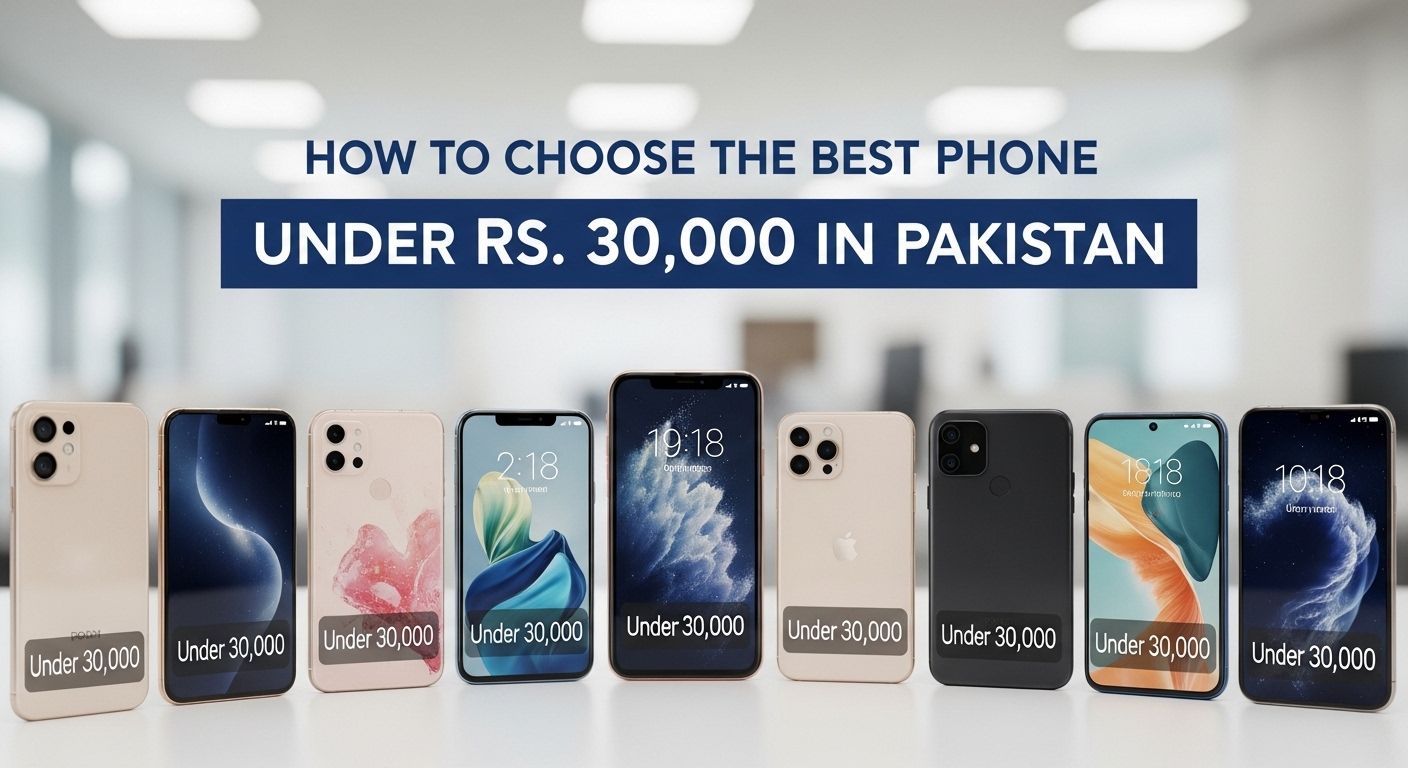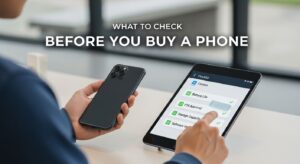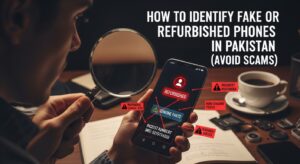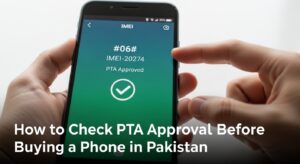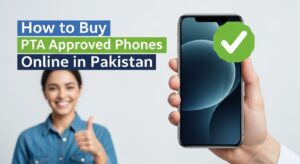Choosing the best phone under 30000 in Pakistan is a process that rewards careful planning and smart decision-making. The journey begins with a clear understanding of your personal needs, which means taking stock of how you use your current device and what features matter most in your daily life.
Whether you prioritize battery life for long days, a sharp display for streaming, or a reliable camera for capturing memories, identifying these priorities early on will help you focus your search and avoid being distracted by unnecessary features. Setting a realistic budget is equally important, as it allows you to balance your wish list with what’s actually available in the market, and leaves room for essential accessories or future upgrades.
Once you have your priorities and budget in place, the next step is to dive into the technical details that separate a good phone from a great one in this price range. Comparing key features like processor speed, RAM, storage capacity, display quality, battery size, and camera performance is crucial.
It’s not just about picking the phone with the highest numbers, but about understanding how these specs translate into real-world performance. For example, a phone with at least 4GB RAM and a recent processor will handle multitasking and gaming smoothly, while a 5000mAh battery ensures you stay connected even during long power outages. Reading user reviews, especially from Pakistani buyers, and using online comparison tools can help you spot hidden strengths or weaknesses that might not be obvious from the spec sheet alone.
The final stages of the process are all about making a secure and satisfying purchase. This means checking for PTA approval to ensure your new phone will work with local networks, choosing a trusted seller—whether online or in a local market—and thoroughly inspecting the device before handing over your money.
It’s wise to confirm the warranty, test all the phone’s features on the spot, and keep all receipts and documentation safe for future support. After your purchase, setting up your phone with the latest updates, security features, and protective accessories will help you get the most out of your investment.
By following these steps, you can confidently navigate the crowded smartphone market and walk away with the best phone under 30000 in Pakistan, perfectly matched to your needs and budget.
Step 1: Understand Your Needs
Before you even start looking at brands or technical specifications, it’s important to get clear about how you’ll actually use your phone. This step is about self-reflection and being honest with yourself about your habits and priorities.
Start by thinking about your daily routine. Do you mostly use your phone for basic tasks like calls, texting, and WhatsApp? Or are you someone who loves taking photos, scrolling through social media, or watching YouTube videos? Maybe you’re a gamer who wants smooth performance, or perhaps you need a phone that can last all day because of frequent power outages.
Write down your top three priorities. For example, you might decide that battery life, camera quality, and storage space are most important to you. This list will help you stay focused when you’re comparing different models and prevent you from getting distracted by features you don’t really need.
If you’re not sure what matters most, try this exercise: For one day, pay attention to how you use your current phone. Notice which features you use the most and which ones you rarely touch. This real-world observation can be more helpful than any online review.
Why this matters:
Phones in this price range offer a variety of features, but not all of them excel in every area. By knowing your own needs, you can avoid paying extra for features you’ll never use and instead focus on what will actually make your daily life easier.
Step 2: Set a Realistic Budget
You’ve already decided that Rs. 30,000 is your upper limit, but it’s wise to think about whether you want to spend the full amount on the phone itself or leave some room for accessories like a protective case, screen protector, or even a power bank.
Prices for phones can change quickly in Pakistan due to currency fluctuations, taxes, and import duties. Before you start shopping, check the latest prices on trusted local websites or visit a few shops to get a sense of the current market.
If you’re open to buying a slightly older model, you might be able to get better specifications for the same price. Older models often drop in price when new versions are released, but they can still offer excellent performance and features.
Practical tip:
Decide on a “hard” upper limit (the absolute maximum you can spend) and a “soft” target (the amount you’d ideally like to spend). This way, you’ll have some flexibility if you find a phone that’s perfect for you but just a little over your initial target.
Step 3: Learn the Key Features to Compare
Understanding the main technical features will help you make sense of product listings and reviews. Here’s what to look for, why it matters, and how to judge what’s good enough for your needs.
| Feature / Key Points | Recommendations |
|---|---|
| Processor (CPU) & RAM – CPU = brain, RAM = short-term memory; determines speed in multitasking, gaming, and demanding apps | At least 4GB RAM. Processors from MediaTek Helio G-series, Snapdragon 600/700, or Unisoc T-series. Check reviews/benchmarks before buying. |
| Storage – Holds apps, photos, videos, and files. Low storage slows phone and forces constant deletion | Minimum 64GB; 128GB ideal. Check for microSD card support. |
| Display – Affects viewing comfort for reading, videos, and gaming | 6.5 inches or larger, at least HD+ (720p); Full HD+ (1080p) is sharper. Higher refresh rate (90Hz or 120Hz) for smoother visuals. |
| Battery Life – Crucial in areas with power outages | 5000mAh or higher; fast charging preferred. |
| Camera – Quality depends on sensor & software, not just megapixels | Minimum 13MP main camera; 48MP+ for more detail. Look for night mode, portrait mode, and AI enhancements. |
| Software & Updates – Determines look, feel, and security of the phone | Android 13+, minimal bloatware. |
| Build Quality & Design – Affects durability and feel | Lightweight plastic is fine; extras like Gorilla Glass or splash resistance are a plus. |
| Other Features – Extra convenience and compatibility options | Dual SIM, fingerprint sensor/face unlock, 4G LTE, headphone jack. |
Step 4: Shortlist the Best Phones Under Rs. 30,000
Now that you know what to look for, it’s time to make a shortlist of phones that fit your needs and budget. This step is about narrowing down your options so you don’t get overwhelmed. Start by checking the latest prices and availability on trusted local websites or by visiting nearby shops. Make a list of phones that meet your key requirements and fall within your budget.
Here’s a sample shortlist of popular options in Pakistan as of July 2025:
| Model | Approx. Price | Key Features |
|---|---|---|
| Infinix Smart 9 | Rs. 25,399 | 4GB/128GB, 5000mAh, 13MP camera |
| Tecno Spark 30C | Rs. 27,100 | 4GB/128GB, 5000mAh, 50MP camera |
| Poco C75 | Rs. 29,999 | 6GB/128GB, 5000mAh, 50MP camera, 90Hz display |
| itel S25 | Rs. 27,149 | 4GB/128GB, 5000mAh, 50MP camera |
| Oppo A3x | Rs. 25,599 | 4GB/128GB, 5000mAh, 13MP camera |
| Realme C61 | Rs. 26,799 | 4GB/128GB, 5000mAh, 50MP camera |
| Vivo Y03 | Rs. 27,499 | 4GB/64GB, 5000mAh, 13MP camera |
| Dcode Bold | Rs. 29,999 | 4GB/128GB, 5000mAh, 50MP camera |
When shortlisting, pay attention to the features that matter most to you. For example, if you care about photography, focus on models with better cameras. If battery life is your top concern, prioritize phones with larger batteries and efficient processors.
Don’t just rely on the specs listed on one website. Cross-check information from multiple sources to make sure it’s accurate. Sometimes, the same model can have different features in different regions.
Step 5: Compare Phones Side by Side
Once you have a shortlist, it’s time to compare your top choices in detail. This step helps you see the real differences between models and decide which one offers the best value for your needs.
Use online comparison tools or create your own table to compare specs like RAM, storage, camera, battery, and display. Look beyond just the numbers—read user reviews and watch video reviews to get a sense of real-world performance.
When comparing, consider:
- How each phone performs in the areas that matter most to you.
- Any common complaints or issues mentioned by users.
- The reputation of the brand for reliability and after-sales support.
- If you’re not sure how to interpret a technical spec, look for plain-language explanations in reviews or ask a knowledgeable friend. Don’t be afraid to take your time—choosing the right phone is worth a little extra research.
Step 6: Check for PTA Approval
In Pakistan, every phone must be approved by the Pakistan Telecommunication Authority (PTA) to work with local SIM cards. If you buy a non-approved phone, it may get blocked after a short period, making it unusable for calls, SMS, or mobile data.
To check if a phone is PTA-approved:
- Dial *#06# on the phone to display its unique IMEI number.
- Send the IMEI via SMS to 8484.
- You’ll receive a reply stating if the phone is PTA approved, non-compliant, or blocked.
- Alternatively, you can check online at the PTA DIRBS website by entering the IMEI.
Always check PTA approval before buying, especially if you’re purchasing from a local market or an online seller. If a phone is not approved, you may have to pay extra for registration, or it might not work at all.
Ask the seller to check PTA approval in front of you. If they hesitate or make excuses, consider it a red flag.
Step 7: Visit Trusted Sellers (Online and Offline)
Where you buy your phone is just as important as what you buy. Trusted sellers are more likely to offer genuine products, proper warranties, and better after-sales support.
For online purchases, stick to well-known platforms like PriceOye.pk or Daraz.pk. On Daraz, look for the “Mall” or “Official Store” tags, which indicate authorized sellers. For price checks and reviews, WhatMobile.com.pk is a reliable resource.
If you prefer to buy in person, visit authorized brand outlets or reputable local shops in major markets like Hafeez Centre (Lahore), Saddar (Karachi), or Hall Road (Lahore). These shops are more likely to offer genuine products and official warranties.
When buying, always ask for a warranty card and the original box. Check the phone’s IMEI on the spot to confirm PTA approval. Be cautious of deals that seem too good to be true—they often are.
If possible, bring a friend or family member who has experience buying phones. They can help you spot potential issues and negotiate a better deal.
Step 8: Inspect the Phone Before Buying
If you’re buying in person, take a few minutes to thoroughly inspect the phone before handing over your money. This step can save you from headaches later.
Here’s a checklist to follow:
- Turn on the phone and check the display for dead pixels, discoloration, or unusual lines.
- Test the camera by taking a few photos and videos in different lighting conditions.
- Play some music or a video to check the speakers.
- Press all the buttons (power, volume, etc.) to make sure they work smoothly.
- Insert your SIM card to confirm network connectivity and make a test call if possible.
- Check the charging port and headphone jack by plugging in a charger and earphones.
- Verify that the IMEI number on the phone matches the one on the box and the PTA approval message.
- Don’t feel rushed. A reputable seller will understand that you want to check everything before buying.
Step 9: Consider After-Sales Support and Warranty
A good warranty and reliable after-sales service can save you a lot of trouble if something goes wrong with your phone. Always check the warranty terms before buying.
- At least a 1-year official warranty from the manufacturer or authorized distributor.
- Service centers in your city or nearby, so you don’t have to travel far for repairs.
- Clear return and exchange policies, especially for online purchases.
- If you’re buying online, read the seller’s return policy carefully. Some platforms offer easy returns, while others may have strict conditions.
- Keep your purchase receipt, warranty card, and original box in a safe place. You’ll need them if you ever have to make a warranty claim.
Step 10: Make the Purchase and Set Up Your Phone
Once you’re satisfied with your choice and have checked everything, go ahead and make the purchase. After buying your new phone, there are a few important steps to take:
- Register your warranty if required. Some brands ask you to register online or via SMS.
- Install essential apps, such as WhatsApp, your favorite social media platforms, and any banking or utility apps you use.
- Update the phone’s software to the latest version. This ensures you have the latest features and security patches.
- Set up security features like fingerprint or face unlock to protect your data.
- Buy a protective case and screen protector to keep your phone safe from drops and scratches.
- Take some time to explore your new phone’s settings and features. Customizing things like notification preferences, display brightness, and app permissions can make your experience smoother and more enjoyable.
Step 11: Tips for Getting the Best Value
Getting the best value isn’t just about finding the lowest price—it’s about maximizing what you get for your money.
- Wait for sales: Big discounts often appear during Eid, Independence Day, or end-of-year sales. If you’re not in a hurry, waiting for a sale can save you thousands of rupees.
- Look for bundle deals: Some shops offer free accessories or data bundles with your purchase.
- Negotiate: In local markets, prices are often negotiable. Don’t be shy about asking for a better deal or extra accessories.
- Check for student or trade-in offers: Some brands offer extra discounts for students or when you trade in an old phone.
- Always compare prices from multiple sellers before making a final decision. Even a small difference can add up, especially if you’re buying accessories as well.
Step 12: Avoid Common Pitfalls
It’s easy to make mistakes when buying a new phone, especially if you’re excited or in a hurry. Here are some common pitfalls and how to avoid them:
- Don’t buy from unverified sellers or without checking PTA approval. This can lead to your phone being blocked or having no warranty support.
- Avoid phones with suspiciously low prices—they may be refurbished, stolen, or fake.
- Don’t ignore the importance of after-sales support. A cheap phone with no warranty can end up costing you more in repairs.
- Don’t rush the process. Take your time to compare options, check reviews, and inspect the phone before buying.
- Trust your instincts. If something feels off about a deal or a seller, it’s better to walk away and keep looking.

